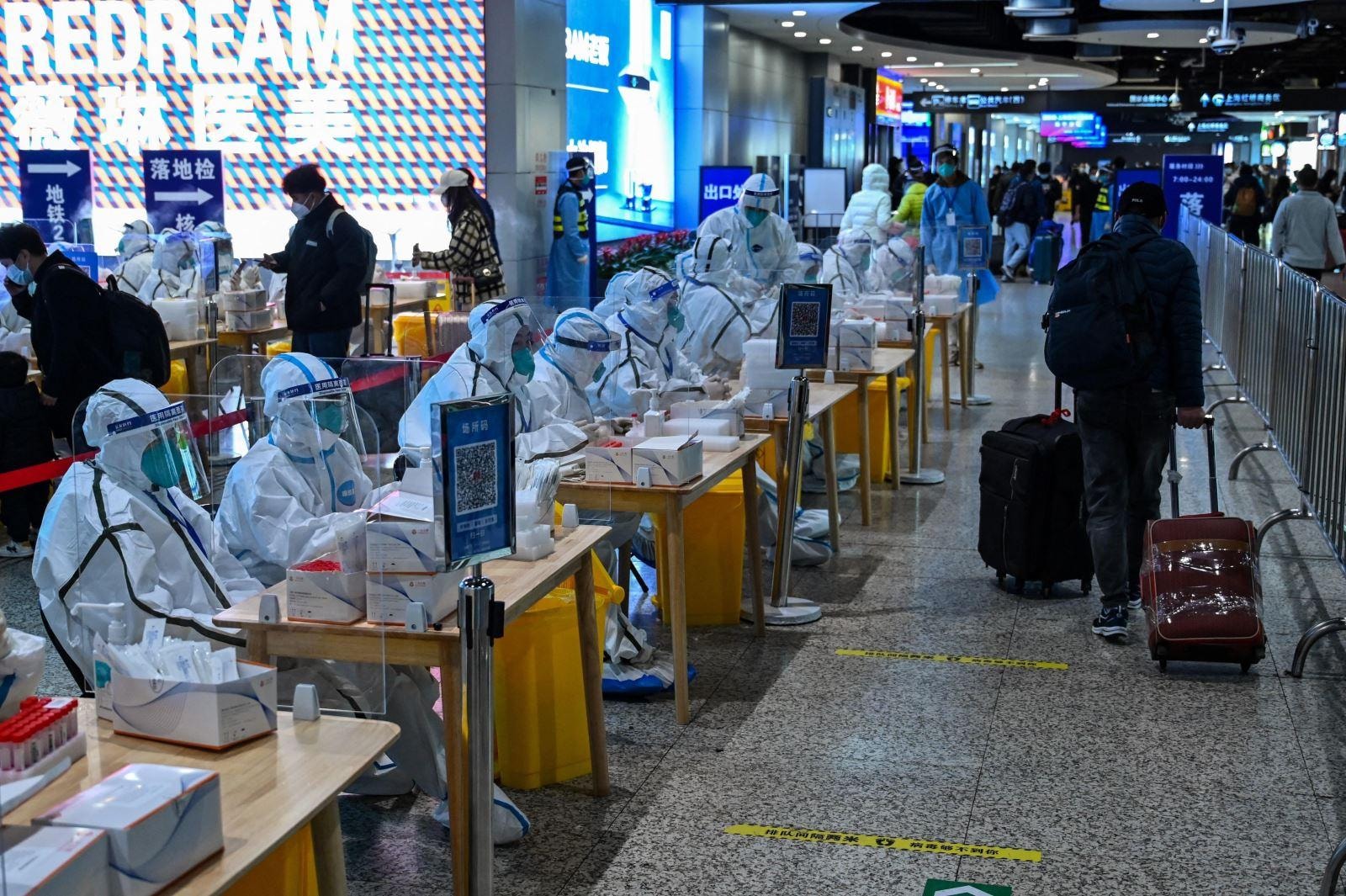China's reopening after the pandemic: A big boost for oil prices
China's reopening after the pandemic is expected to be a bigger driver of oil prices than the G7 and EU's price cap on Russian oil.
 |
An oil tanker unloads imported crude oil at Qingdao port in east China's Shandong province on May 9, 2022. File photo: AFP |
China is the world's largest oil importer and news of its reopening plans has weighed on oil prices.
Singapore Foreign Minister Vivian Balakrishnan told CNBC on December 6 that China's reopening after the pandemic would be a bigger driver of oil prices than imposing a $60-a-barrel price cap on Russian crude.
“I hope to see a significant opening. Now that has profound implications for the global economy, much more than an oil price ceiling,” said Mr. Balakrishnan.
Foreign Minister Balakrishnan's comments came after the G7 and EU imposed a $60-a-barrel price cap on Russian seaborne oil, effective December 5. Russia has said the measures will not affect its actions in Ukraine.
Oil prices rose sharply in Asian trading on December 5 after China, the world's largest oil importer, signaled further easing of COVID-19 control measures - a move towards abandoning the Zero-COVID policy and normalizing life.
Oil prices were further supported when OPEC+ said it would maintain its current oil production cut policy from November until the end of 2023.
According to Rob Thummel, portfolio manager at Tortoise Capital, China’s oil demand has fallen by about 1 million barrels this year. “The thing that will drive China’s oil demand higher… is obviously the reopening of the economy, but more importantly the buildup to storage,” he said.
“Oil inventories are low around the world and I think the world has realized that energy security is quite important. So that will be a big driver in both China – and India – going forward, which will drive increased oil demand going forward. And again, that is likely to lead to higher prices,” Thummel added.
 |
Medical staff work at a COVID-19 testing site at Hongqiao railway station in Shanghai, China, December 6, 2022. Photo: AFP/TTXVN |
The Chinese government on December 7 issued a 10-point plan to "optimize" efforts to respond to the COVID-19 pandemic, balancing disease control and socio-economic development.
According to the new guidelines, asymptomatic or mildly symptomatic COVID-19 cases can be isolated at home. Close contacts who meet the requirements can also choose to isolate at home for 5 days or undergo collective isolation. The new guidelines note that people isolated at home need to strengthen health monitoring and if their condition worsens, they will be transferred to designated medical facilities for timely treatment.
Other changes include reducing the frequency of nucleic acid testing (NAAT); removing the requirement to present negative nucleic acid results and health code scans to enter public places; and removing the requirement for testing and health code scanning for people traveling between provinces and cities within the country. Residential areas will also no longer be completely locked down, but instead, high-risk or low-risk areas will be designated at the building level, potentially affecting a single floor or even just a single household.
Localities are also required to rectify the way of fighting the epidemic by simplifying everything or "putting everything in one basket", overcoming "formalism and bureaucracy".
Last week, Chinese health officials also announced a new push to boost vaccinations for the elderly, stressing that the shots still prevent severe illness and death.
Foreign Minister Balakrishnan, who was a medical doctor before entering politics, also said that the medium and long-term strategy towards China should focus on vaccination.
“You can open up more if you have a high vaccination rate. So I will be watching the efforts that China is making to increase vaccinations for the elderly,” he said.
Foreign Minister Balakrishnan said another variable officials need to monitor before amending COVID-19 protocols is the medical capacity of a city or province.
“I expect to see a more diverse response, which means it can't be one size fits all,” he said.
Singapore's foreign minister predicted that China could fully reopen within the next three to six months. “Singapore is a testament… that with wise, careful, deliberate policy and preparation, China can open up and open up fully.”


